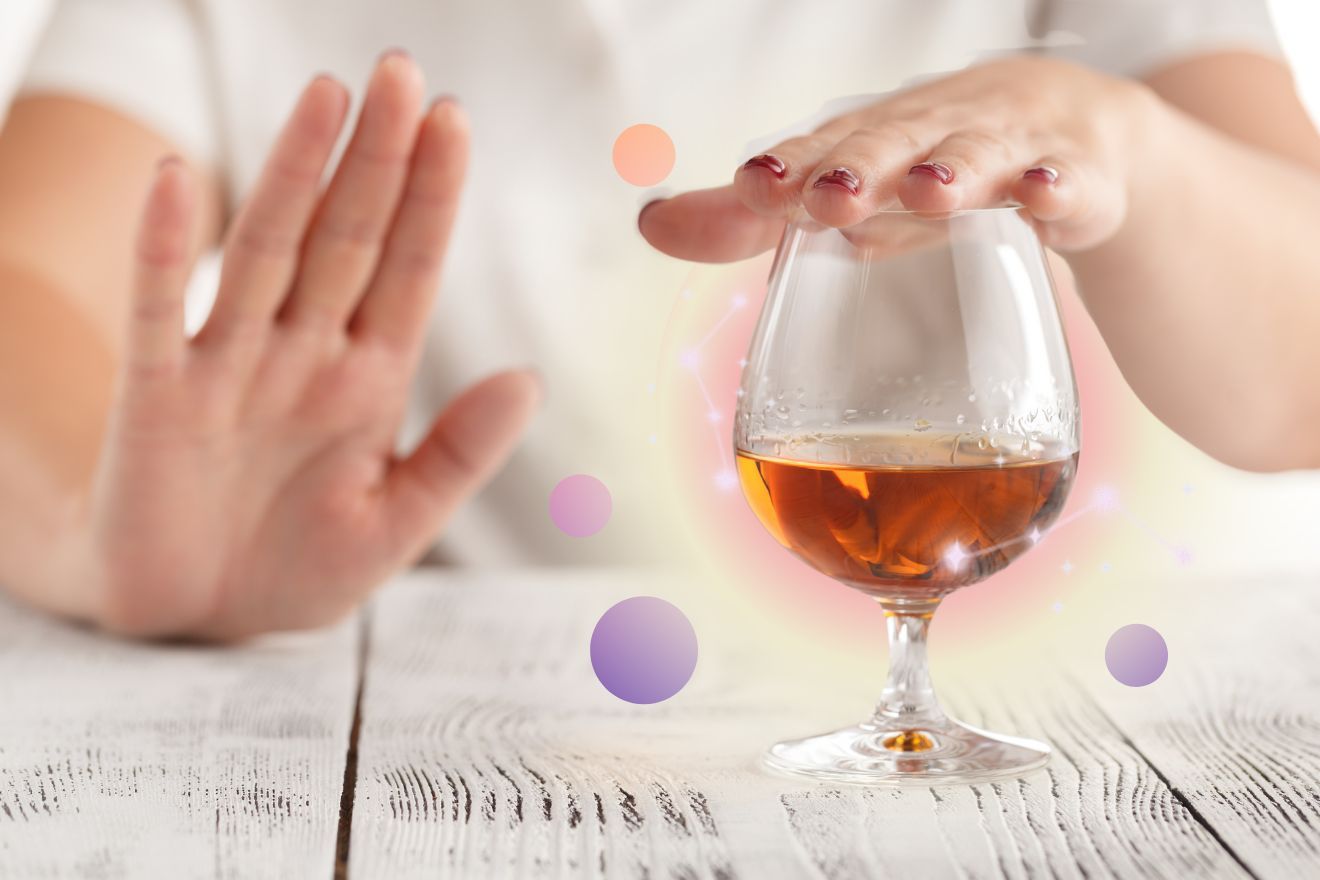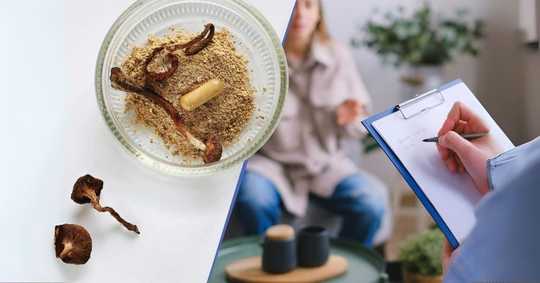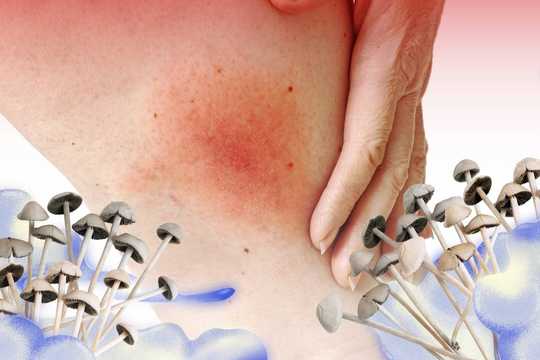Welcome to the third part of our series, as we investigate ketamine-assisted psychotherapy (KAP) for alcohol use disorder (AUD). We have been taking a look at psychedelic treatments for AUD, with an introduction to the rationale for the therapeutic use of psychedelics as part of the recovery process and an examination of MDMA-assisted therapy for AUD. Now, we look at an “old” medicine used in modern-day clinical practices—ketamine.
Check out the Rest of Our Blog Series About Psychedelic Therapies Helping Alcohol Use Disorder:
The History of Ketamine and Its Future is Complicated
Like every medicine in the psychedelic space, ketamine is having a moment. Currently, ketamine may be the most highly used psychedelic medicine because it can be prescribed legally in the U.S. Although this is promising, it comes with risks as well. Please stick around to read about the potential pitfalls of ketamine-assisted psychotherapy. We also look at why it might not be the best option for many people seeking therapeutic healing, recovery, and relief from problematic alcohol use. Before getting any further, we delve into ketamine’s history to help inform and develop an understanding of this seemingly complicated medicine.
Battlefield Magic for Medics and Surgeons in Vietnam
First developed in 1962, ketamine is not a new medicine. Coming out of World War II and the Korean War, the United States realized it had a problem with morphine on the battlefield. Researchers found that morphine caused many “accidental deaths” due to respiratory depression. It was deemed untrustworthy in emergency medicine on the battlefield.
With the next war just a few years away, ketamine, a novel dissociative anesthetic, appeared on the scene. Ketamine has various beneficial physiological effects, including dissociative anesthesia, pain relief, and sedation. However, there are dose-dependent side effects, including disorientation, dysphoria, nausea, and dizziness. However, in the context of medical use, the benefits outweigh the transient side effects.
Unlike opiates, ketamine doesn’t suppress the respiratory and cardiovascular system [1]. Ketamine doesn’t cause slow or shallow breathing, nor does it lead to low blood pressure. Both of these were problems caused by morphine, resulting in deaths as a result of overdoses [2]. As a result, ketamine gained popularity for use on the battlefield and in emergency surgeries during the Vietnam War. The World Health Organization’s (WHO) list of essential medicines for anesthesia and pain management includes ketamine. What’s more, ketamine is now widely used and accepted as a safe and effective medicine.
Ketamine Soars Out of the K-Hole and Into the Light
Coming out of the Vietnam War, ketamine’s history shadowed MDMA in many ways. People began discovering the psychedelic and dissociative effects of ketamine, creating popularity in the underground rave scene. Reports of kids and young people going into the “K-hole” began to surface, along with the fear-mongering headlines and stigma.
“…ketamine treatment may lower the probability of alcohol use, reduce heavy drinking days, and increase the proportion of post-infusion abstinent days.”
— Michael Kelson et al.
But this is not to say that ketamine doesn’t have risks—especially when used in recreational settings without proper medical supervision. It’s important to note that many of the deaths associated with ketamine were not solely caused by the drug itself. Rather, these were caused by accidents or a combination with other drugs. People can develop a psychological addiction to ketamine. According to a review on ketamine abuse, “long-term use of high doses of ketamine leads to numerous physical and psychological negative effects, such as abdominal pain, urinary system disorder, dependence/tolerance/withdrawal, cognitive impairment, psychosis, and depression [3].” For these reasons, ketamine was added to the list of Controlled Substances as Schedule III in 1999.
Many of us today have never heard about the success of MDMA during the late 1970s and early 1980s for couples therapy. Similarly, most of us today are not aware of ketamine’s application during the Vietnam War and its ongoing use as an anesthetic agent for children. It seems as if society at large is only aware of the last 2 or 3 decades of “K-hole” hysteria at raves. However, many successes came out of the pushback – Schedule III status and the exploration of its psychedelic effects.
Can’t Suppress the Success of Ketamine
By the early 2000s, medical professionals couldn’t deny the success of ketamine in medical contexts as an anesthetic and pain reliever. Indeed, ketamine has side effects and risks. Even so, the evidence for medical use meant it couldn’t be banned or classified as a Schedule 1 substance. Doctors, hospitals, and veterinary clinics have all had access to it for years.
Understanding the history, physiological effects, and therapeutic benefits of ketamine can be complicated. Before going any further with a more detailed explanation of all things ketamine, including its use mentioned above in Vietnam, please read our ketamine treatment guide for mental health.
Because ketamine never went entirely underground, people were still able to acquire it. They found that ketamine had intriguing psychedelic effects, sometimes triggering mystical experiences. Studies conducted from 2000-2006 suggested ketamine could have rapid anti-depressant effects. Thanks to its legal status, research advanced more quickly than other Schedule I psychedelic compounds.
Now, the mainstream media is bringing light to these medicines. It’s guiding many members of society to accept the use of ketamine as a mental health intervention. This shift in perception is because recent studies have shown that ketamine can help in alleviating treatment-resistant depression (TRD), suicidal ideations, anxiety, mood disorders, and post-traumatic stress disorder (PTSD). Ketamine’s therapeutic potential has led to the use of ketamine-assisted psychotherapy (KAP) in treating substance misuse and addiction, including problematic alcohol use.
Before discussing ketamine and alcohol use disorders, let’s add a disclaimer and note of caution first.
Ketamine’s Popularity Breeds Misdeeds?
Two of the very things that have made ketamine successful and popular now contribute to its risky profile at times. Namely, these are its legal status and its popularity.
For example, ketamine can be legally used at home with a prescription or in medical contexts by anesthesiologists. Because of this, it has a head start over other psychedelic medicines that aren’t available for legal use beyond clinical trials, like MDMA and psilocybin, for instance. One type of ketamine therapy already permeates many parts of the United States. Around 2018, billboards popped up along highways in Florida advertising ketamine therapy treatments. Why?
Types of Ketamine Therapy
There are two types of ketamine therapy – let’s break this down. One type is administered by anesthesiologists and in infusion clinics. One typically administers ketamine via an IV drip (called ketamine IV infusion treatment). Findings have shown the efficacy and sustainability of these treatments, as the impact of ketamine can be impactful for days or up to a few weeks without talk therapy. In this context, the intervention does not focus on mystical, psychedelic experiences and does not delve into them during psychotherapy. The neurobiological effects of ketamine are mechanisms for symptom relief, not the talk therapy aspect. The limitation of IV infusions without psychotherapy is that maintenance dosing is required to maintain the positive effects.
The other type of ketamine therapy involves triggering a mystical experience and always includes talk therapy or psychotherapy. Providers typically offer this approach with non-drug preparatory and integration sessions. They usually aim to use ketamine to amplify the psychotherapeutic process, similar to MDMA-assisted therapy.
To learn more about the differences between ketamine IV infusion and ketamine-assisted psychotherapy, please read this article here.
Since one can legally administer ketamine and mail-order services send out oral ketamine, ketamine therapy is growing rapidly. Social media and advertisements tout the benefits of ketamine with little information about the potential risks. Information about excessive use without medical oversight is especially absent. It is seemingly clear that many people have not been informed or do not understand the difference between the types of ketamine treatments or the risks. Because of this, many individuals seeking support often don’t know what’s best for them before even trying it. This information is imperative to know. This is especially true before embarking on an exploration of ketamine therapy as a treatment intervention for alcohol use disorder.
Ketamine Gaining Popularity as Treatment for Alcohol Use Disorder
If you read the second part of this series, hearing about Awakn Life Sciences in the video above should have perked up your ears. Awakn Life Sciences is a U.K.-based company that has spearheaded research investigating ketamine therapy as a treatment for AUD. It appears that ketamine therapy may be as effective, if not more, in helping individuals overcome alcohol misuse.
As far back as 2019, ketamine’s efficacy in treating AUD came to light. This revelation is thanks to a paper titled Ketamine Can Reduce Harmful Drinking by Pharmacologically Rewriting Drinking Memories [4]. The paper found:
“…the promise of reconsolidation interference as a therapeutic mechanism in harmful drinking, alcohol, and substance use disorders and offers key insights into the therapeutic targets of ketamine… The striking apparent dampening of reward structures surrounding alcohol and substantial, lasting reductions in drinking levels highlight that reconsolidation interference may form a key part utility of the next generation of more effective long-term treatments for addictive disorders.”
Clinical Trials and Findings
Participants who had ketamine combined with therapy stayed completely sober for 162 of 180 days in the ensuing six months.
— University of Exeter
Later, researchers found that a single dose of ketamine combined with talk therapy may reduce alcohol use. After the three-week study, 82% of the participants remained abstinent and took longer to relapse. This success prompted further investigation. In 2022, the University of Exeter undertook a clinical trial examining how ketamine and psychological therapy may help people with severe alcohol use disorder. What did they find?
Researchers reported that the participants who had ketamine combined with therapy stayed completely sober for 162 of 180 days in the ensuing six months. The 87 percent abstinence was “significantly higher than any of the other groups,” researchers said.
Researchers reported the group was more than 2.5 times more likely to remain completely abstinent at the trial’s end than participants on a placebo.
A qualitative study [11] found that ego dissolution and dissociation related to transformational effects on participants’ relationship with alcohol. During these semi-structured interviews, participants reported that they remained abstinent for more extended periods (3-6 months) when compared with the placebo group [6]. Additionally, when they did consume alcohol, they consumed less. The efficacy of the treatment also appeared to be strong, with its effects maintained at six months post-treatment [6]. It is important to note here that these findings proved to be significant following three ketamine infusions [6]. Additional participant reports show a reduction in both their desire to drink alcohol in pleasurable experiences when drinking alcohol. Previous research also indicates that individuals who participated in ketamine-assisted psychotherapy as a healing agent for AUD had higher rates of addiction clinic attendance [5].
Psychotherapy Integration
The findings also revealed that participants’ experiences during and after ketamine sessions had more significant effects when ketamine-assisted psychotherapy was combined with a mindfulness-based therapeutic framework [6, 10]. An example of such a framework is Mindfulness-Based Relapse Prevention. Based on the present information, researchers suggest that combining ketamine-assisted psychotherapy with a variety of psychotherapies can lead to more long-lasting effects [6].
These early findings have paved the way for continuing success.
Current Research of Ketamine Therapy for Alcohol Use Disorder
Today, ketamine’s effectiveness for alcohol cessation leads to further studies. In Ketamine Treatment for Alcohol Use Disorder: A Systematic Review, the authors [7] found that “The overall proportion of patients achieving abstinence and reduced consumption was most favorable in people receiving combination ketamine and psychotherapy treatment.”
Here, we notice a continuing theme. Researchers conducting much of the current research on ketamine therapy for alcohol use disorder are demonstrating the potential healing pair of ketamine and talk therapy or psychotherapy. Furthermore, this study [7] reveals “…that ketamine treatment may lower the probability of alcohol use, reduce heavy drinking days, and increase the proportion of post-infusion abstinent days.”
Current research sheds light on how adjunctive psychotherapy has been and can continue to be a supportive agent in prolonging the healing effects of ketamine treating AUD [8]. A recent study poses questions for future researchers to consider. An example is the following [9]:
What is an optimal dosing schedule? What impact do comorbidities and the severity of AUD have on clinical outcomes post-ketamine administration?
Although these are just a few questions, they point to what can potentially be addressed in the future to continue filling the gap in research on ketamine-assisted psychotherapy treating AUD.
In light of ketamine’s success, the Ketamine for Reduction of Alcohol Relapse (KARE) trial started in 2023 in the U.K. This phase III trial continues the research done by the University of Exeter mentioned earlier. £ 2.4 million will fund the largest trial of ketamine-assisted therapy for alcohol use disorder. And additional funds will come from, guess who? Awakn Life Sciences.
Limitations
Researchers have identified promising findings and strengths regarding the efficacy of using KAP as a treatment agent for AUD. Even so, they should also consider many limitations. Future research should consider a variety of variables to strengthen not only the efficacy of treatment but the generalizability of results as well. Researchers identified common limitations across studies. Limitations include but are not limited to sample size [11; 6; 8], participant involvement (e.g., dropping out [10], inclusion criteria [8]), exclusion criteria (e.g., use of SSRIs [6; 5]), and (as a result) generalizability of research implications.
Challenges and Suggestions for Future Research
Participants reported ketamine having positive effects on their mood following treatment [11]. Despite this, the effects lessened within approximately one week of the treatment. Participants also shared that their attitudes towards alcohol changed. Additionally, they shared that it was unclear whether or not this change was due to the ketamine treatment itself, education, or a combination of the two. These findings indicate potential suggestions for future research. For example, future research can consider having one group receive education about ketamine as a treatment for AUD and receive the ketamine treatment. In contrast, the other group receives only the ketamine treatment and no additional education.
Previous research suggests that future studies should consider evaluating “biomarkers that indicate clinical efficacy and abuse potential of the drug” [12]. Another potential suggestion for future research is to consider using consistent measures geared towards psychedelic experiences across studies using ketamine-assisted psychotherapy. For example, Grabski [6] shared that they did not use the Mystical Experience Questionnaire or the Clinician-Administered Dissociative States Scale. These scales could have been useful measures to include in their study. Grabski [6] emphasizes the importance of using an active placebo, and Terasaki [5] highlights how no blinding can potentially lead to strong expectancy effects in participants.
Considering the present information, it is apparent that there are many limitations to consider when investigating current and previous research using ketamine-assisted psychotherapy as a therapeutic agent in treating AUD. However, these findings can guide future research in hopes of improving the efficacy of ketamine as a healing agent. Not only this, it could also strengthen the generalizability and impact of future research. By identifying limitations in research, we can pave the way for a hopeful future where researchers can work together to fill research gaps.
How Do I Know if Ketamine Therapy for Alcohol Use Disorder is Right for Me?
Unlike MDMA-assisted therapy, clinics readily offer ketamine therapy, and it is available through mail-order prescriptions. Although, extreme caution should be exercised for home use. If you think ketamine might be a treatment option for you, always consult your primary care doctor and therapist first. You may have medical contraindications that prohibit you from using ketamine. If this is the case, there are alternative treatment options.
References
Battlefield Magic for Medics and Surgeons in Vietnam
1. Abdollahpour, A., Saffarieh, E., & Zoroufchi, B. H. (2020). A review on the recent application of ketamine in management of anesthesia, pain, and health care. Journal of Family Medicine and Primary Care, 9(3), 1317. https://doi.org/10.1016/j.rmed.2021.106667
2. Montandon, G. (2022). The pathophysiology of opioid-induced respiratory depression. Handbook of Clinical Neurology, 188, 339-355. https://doi.org/10.1113/JP285163
Ketamine Soars Out of the K-Hole and Into the Light
3. Huang, M. C., & Lin, S. K. (2020). Ketamine abuse: past and present. Ketamine: from abused drug to rapid-acting antidepressant, 1-14. https://link.springer.com/chapter/10.1007/978-981-15-2902-3_1
Ketamine Gaining Popularity as Treatment for Alcohol Use Disorder
4. Das, R. K., Gale, G., Walsh, K., Hennessy, V. E., Iskandar, G., Mordecai, L. A., … & Kamboj, S. K. (2020). Author Correction: Ketamine can reduce harmful drinking by pharmacologically rewriting drinking memories. Nature Communications, 11(1), 3065. https://www.ncbi.nlm.nih.gov/pmc/articles/PMC6879579/
5. Terasaki, D., Loh, R., Cornell, A., Taub, J., & Thurstone, C. (2022). Single-dose intravenous ketamine or intramuscular naltrexone for high-utilization inpatients with alcohol use disorder: pilot trial feasibility and readmission rates. Addiction Science & Clinical Practice, 17(1), 1-12. https://doi.org/10.1186/s13722-022-00345-y
6. Grabski, M., McAndrew, A., Lawn, W., Marsh, B., Raymen, L., Stevens, T., … & Morgan, C. J. (2022). Adjunctive ketamine with relapse prevention–based psychological therapy in the treatment of alcohol use disorder. American Journal of Psychiatry, 179(2), 152-162. https://doi.org/10.1176/appi.ajp.2021.21030277
Current Research of Ketamine Therapy for Alcohol Use Disorde
7. Kelson, M., Burnett, J. M., Matthews, A., & Juneja, T. (2023). Ketamine Treatment for Alcohol Use Disorder: A Systematic Review. Cureus, 15(5). https://www.ncbi.nlm.nih.gov/pmc/articles/PMC10237681/
8. Goldfine, C. E., Tom, J. J., Im, D. D., Yudkoff, B., Anand, A., Taylor, J. J., … & Suzuki, J. (2023). The therapeutic use and efficacy of ketamine in alcohol use disorder and alcohol withdrawal syndrome: a scoping review. Frontiers in Psychiatry, 14, 1141836. https://doi.org/10.3389/fpsyt.2023.1141836
9. Jaguga, F., Kirwa, P., Gakinya, B., Manji, I., Andale, T., Kinyanjui, D., … & Aruasa, W. K. (2023). Intravenous ketamine for severe alcohol use disorder at Moi Teaching & Referral Hospital, Kenya: a case report. Substance Abuse Treatment, Prevention, and Policy, 18(1), 1-10. https://doi.org/10.1186/s13011-023-00519-0
Limitations
10. Dakwar, E., Levin, F., Hart, C. L., Basaraba, C., Choi, J., Pavlicova, M., & Nunes, E. V. (2020). A single ketamine infusion combined with motivational enhancement therapy for alcohol use disorder: a randomized midazolam-controlled pilot trial. American Journal of Psychiatry, 177(2), 125-133. https://doi.org/10.1176/appi.ajp.2019.19070684
11. Mollaahmetoglu, O. M., Keeler, J., Ashbullby, K. J., Ketzitzidou-Argyri, E., Grabski, M., & Morgan, C. J. (2021). “This Is Something That Changed My Life”: A Qualitative Study of Patients’ Experiences in a Clinical Trial of Ketamine Treatment for Alcohol Use Disorders. Frontiers in Psychiatry, 12, 695335. https://doi.org/10.3389/fpsyt.2021.695335
12. Worrell, S. D., & Gould, T. J. (2021). Therapeutic potential of ketamine for alcohol use disorder. https://doi.org/10.1016/j.neubiorev.2021.05.006
The article was reviewed and edited for scientific accurracy by Allison Feduccia, PhD.






